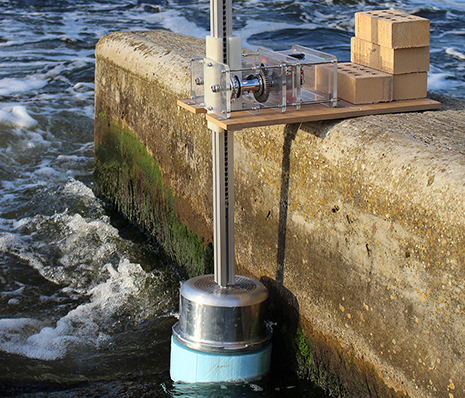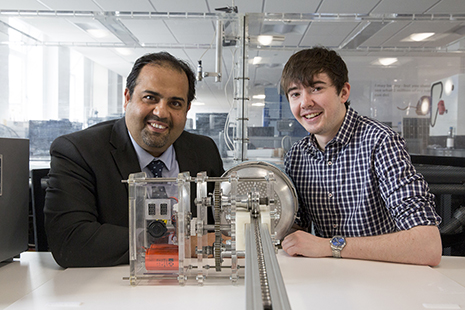
The wave energy harvester, which is powerful enough to charge a mobile phone, is made from old bike parts and a disused pressure cooker
A working prototype of a shoreline electrical generator, which can put out 5.6 watts from a regular supply of 20cm high waves, is showing how everyday items can be used to build electricity generators in poor costal areas.
Student Owen Griffiths, a BSc Product Design undergraduate at Nottingham Trent University (NTU), aims to help those living in developing countries who have limited access to electricity with his device, built from old bicycle parts and a recycled pressure cooker.
https://giphy.com/embed/gEMbTVEs7eIX6
The metal pressure cooker acts as a robust buoy that bobs up and down with the waves, while a rack, made from an aluminium extrusion channel, is fixed to its lid, creating linear energy as each wave passes beneath.
Encased in either side of the extrusion channel are lengths of bicycle chain, which are used as teeth for the rack, connecting to two old bicycle sprockets working as pinions interlocked with the chains to convert the linear energy to rotational energy.
As the rack moves upwards with a wave, the first sprocket turns and powers the generator while the second is disengaged, like when a cyclist freewheels on a bicycle.

As the rack moves downwards when the wave passes, the second sprocket turns and the first is disengaged. This allows the harvester to maximise its efficiency by generating power from both the rise and fall of each wave.
After turning through a series of gears to increase the centrifugal force, the rotational movement spins a small generator at 151 rotations per minute (RPMs), which creates electricity.
Griffiths’ project is being exhibited at the NTU Degree Show, currently taking place at the university until 10 June.

Professor Amin Al-Habaibeh, a professor of intelligent engineering systems, and BSc Product Design undergraduate Owen Griffiths with the wave energy harvester
“This project shows how everyday items widely available around the world, which are often thrown away when no longer used, could be transformed into devices which can generate useful amounts of renewable energy,” said Professor Al-Habaibeh, of the university’s School of Architecture, Design and the Built Environment.
“As well as being of use in some developing countries, this technology has the potential to be scaled up to create larger quantities of power in countries such as the UK, which has a large amount of natural energy produced by a regular supply of waves from the North Atlantic Ocean.”






